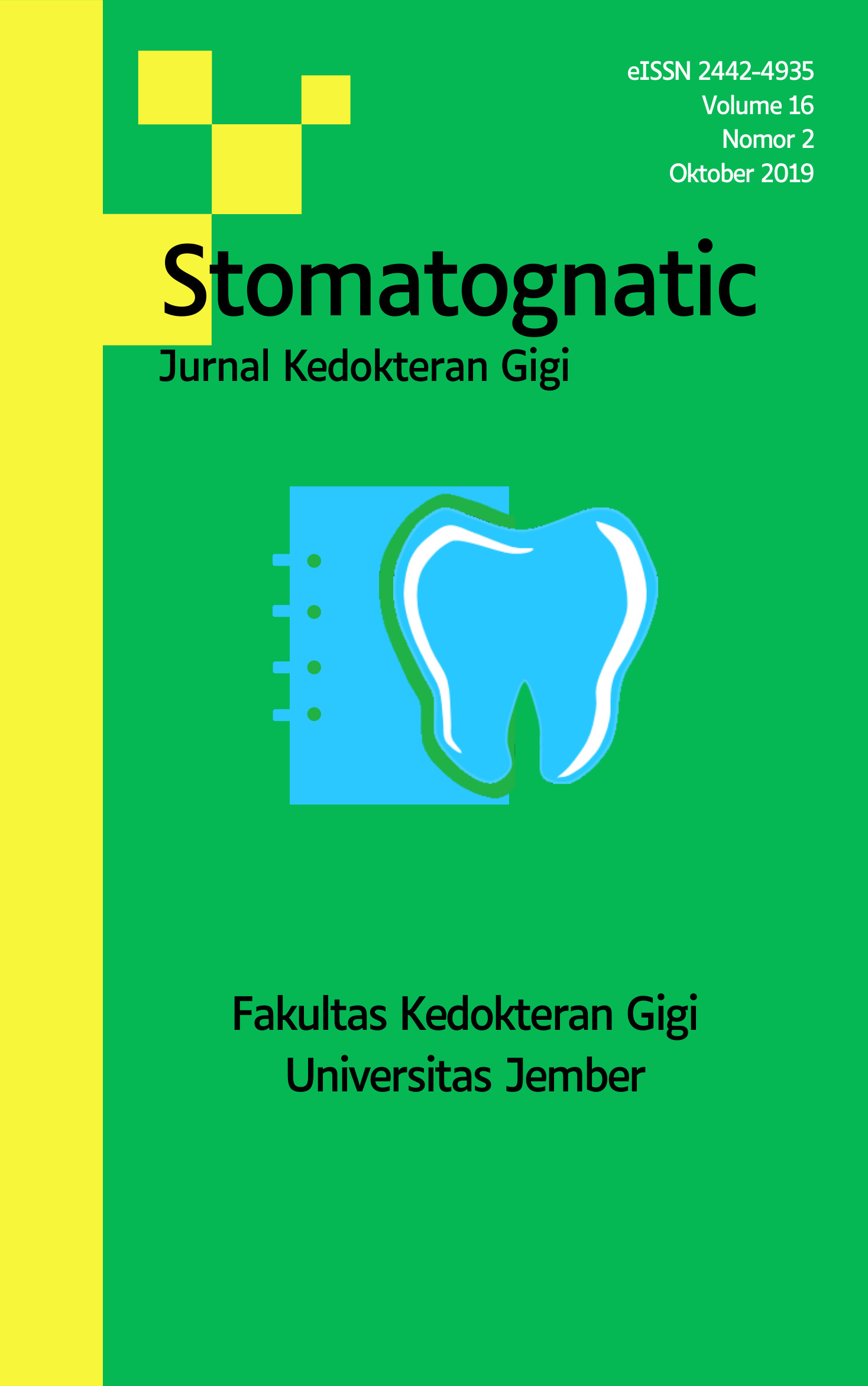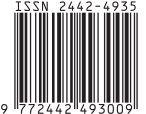Perbedaan Perubahan Warna Permukaan Resin Komposit Nanohybrid Pasca Perendaman dalam Cuko Pempek (Saus Manis dan Asam) dan Jamu Kunyit Asam (Curcuma Domestica Val – Tamarindus Indica)
DOI:
https://doi.org/10.19184/stoma.v16i2.23091Abstract
The advantages of Nanohybrid composite resin are they have a smooth surface and greater strength, also minimal shrinkage. The disadvantages of composite resin are the color changes extrinsically and intrinsically. The color is changing extrinsically because of the dyes which attached to the surface of the composite resin and the color is changing intrinsically due to oxidation of monomers. Pempek and turmeric-tamarind herbal drink (jamu) are kind of foods and beverages that are very popular among Indonesian people, both of them are causing discoloration on the surface of the composite resin. The objective was to identify the difference composite resin color change after soaking in sweet and sour sauce (cuko pempek) and turmeric-tamarind herbal drink. This study was experimental laboratory research with pre-test and post-test research design. The samples were 32 pieces of Nanohybrid composite resin with the size of 10 x 2 mm. 16 samples of each test were soaked in 5 ml “cuko pempek†and turmeric-tamarind herbal drink in 37 0 C temperature in 7 days. The color change was measured using spechtrophotometer (UV-2401 PC). Results: There are differences between Nanohybrid composite resin surface color change which were soaked in “cuko pempek†and turmeric-tamarind herbal drink which marked in an average change of dE*ab “cuko pempek†(4.7244) and turmeric and tamarind herbal drink (39.1944). The results of independent T-Test also showed a significant color change that is p = 0,000 (p <0.05). This study concluded that there were differences between Nanohybrid composite resin surface color change which are soaked in “cuko pempek†and turmeric-tamarind herbal drink.







